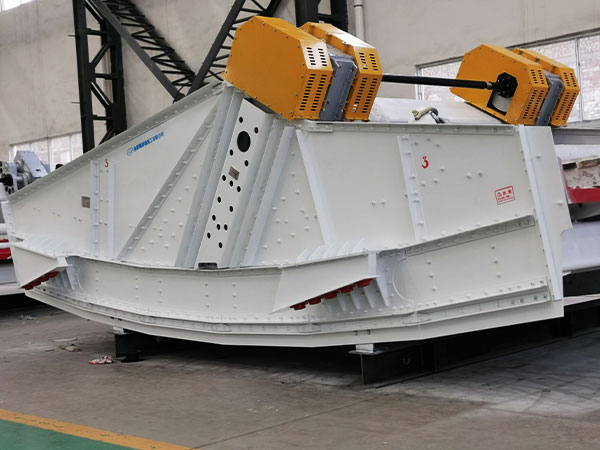Introduction to the structure and working principle of vibrating screen
Vibrating screen is a kind of filtering mechanical separation equipment. It has a wide range of applications and is often used in mining, coal, smelting, building materials, chemical industry, light industry, food, medicine and other industries.
Although the vibrating screen is widely used in our lives, many people are not clear about its structure and working principle. Next, the vibrating screen manufacturer will introduce the structure and working principle of the vibrating screen to you.
The structure of the vibrating screen

1. Vibration exciter
The main function of the exciter is to enable the working body to vibrate continuously. There are generally two types of vibration exciters for uniaxial vibrating screen and biaxial vibrating screen according to the eccentric reconfiguration method.
2. Sieve box
The screen box of the vibrating screen is mainly composed of the screen frame, the screen surface and its pressing device. The screen frame is composed of side plates and beams, which need to have sufficient rigidity.
3. Supporting device
There are two types of support devices for vibrating screen: seat type and hanging type. Because the seat type installation is relatively simple, and the installation height is also low, the seat type support is preferred. The support device of the vibrating screen is mainly composed of elastic elements, commonly used are coil springs, leaf springs and rubber springs.
4. Transmission
Usually, the vibrating screen adopts a V-belt transmission device. Due to its simple structure, the number of revolutions of the exciter can be selected arbitrarily, but the belt is easy to slip during operation, which is easy to cause the screen hole to be blocked. The vibrating screen is also directly driven by the coupling. The coupling can maintain the stable revolution of the exciter and has a long service life, but the adjustment of the revolution of the exciter is not as simple as that of the V-belt transmission.
Working principle of vibrating screen

When the vibrating screen is working, the two motors rotate in the opposite direction synchronously, so that the exciter can generate a reverse exciting force, so that the screen body drives the screen to start longitudinal movement, so that the material on the screen is subjected to the exciting force and periodically. Throw forward a range to complete the material screening. The vibrating screen is suitable for screening sand and gravel in quarries, and can also be used for product classification in coal preparation, mineral processing, building materials, electric power and chemical industries.
The working part of the vibrating screen is fixed, and the material is screened only by the sliding of the material along the working surface. Fixed grid screen is one of the most widely used in concentrators, and is generally used for pre-screening before coarse crushing or secondary crushing.
The structure is simple, the manufacture is convenient, and the ore can be directly unloaded onto the screen surface without power consumption. The vibrating screen adopts a cylindrical eccentric shaft exciter and an eccentric block to adjust the amplitude. The material screen has a long flow line and a variety of screening specifications. It has the characteristics of reliable structure and strong excitation force.
The above is the introduction about the structure and working principle of the vibrating screen. It can be seen from the above introduction that the vibrating screen is composed of a vibration exciter, a screen box, a supporting device and a transmission device. It is mainly used in quarries, coal preparation, building materials, electric power and chemical industry, etc.



